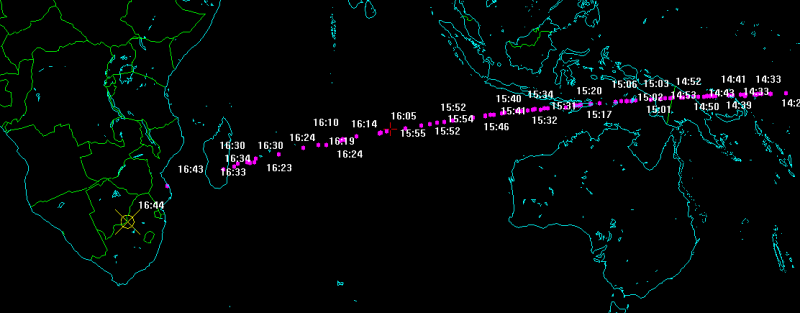Pluto, which has a highly
elliptical orbit, is an average of 5.91 billion kilometers (3.67 billion miles)
from the Sun. Now a minor asteroid impact has once against reminded humanity of
its dispiriting impotence in the face of cruel cosmic fate NASA’s Planetary
Defence team glimpsed a six-foot-wide asteroid called 2018 LA just a few months ago.
Very few hours later, it hit
Earth travelling at 38,000 mph and caused a huge fireball to appear in the sky
above Botswana, Africa. ‘This was a much smaller object than we are tasked to
detect and warn about,’ said Lindley Johnson, Planetary Defense Officer at NASA
Headquarters.
‘However, this real-world
event allows us to exercise our capabilities and gives some confidence our
impact prediction models are adequate to respond to the potential impact of a
larger object.’
Now, you might think that 19
hours between detection and impact is a very short space of time. Think again.
Humanity has only detected an asteroid on a collision course a handful of times
– and only one other of these sightings took place with ample time to spare
before it hit us.
‘The discovery of asteroid
2018 LA is only the third time that an asteroid has been discovered to be on an
impact trajectory,’ said Paul Chodas, manager of NASA’s Center for Near-Earth
Object Studies.
The Minor Planetary Centre
said ‘object no longer exists (in its original form), following its entry into
the Earth’s atmosphere on 2 June 2018. This doesn’t mean the asteroid touched
down on Earth and was spirited away by shadowy men in dark suits.
It is likely to have been
totally obliterated when it smashed into our planet’s atmosphere, with very
little debris falling to Earth.
Source



While it's smashed no problems.if it's not smash than it would have bigger trouble for our existences.
ReplyDelete